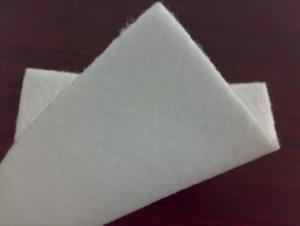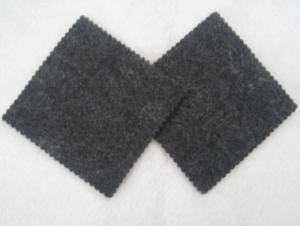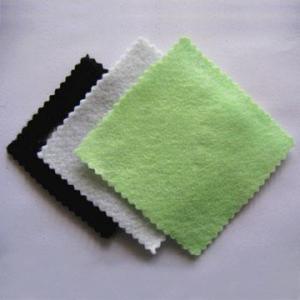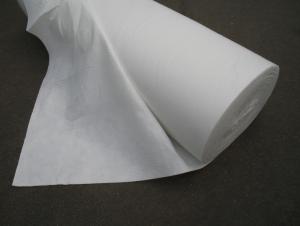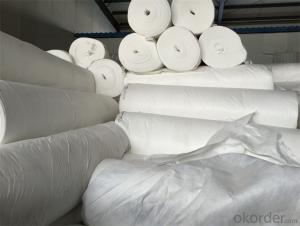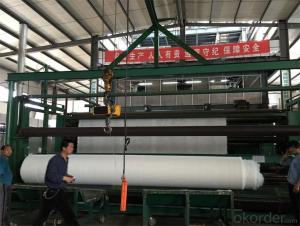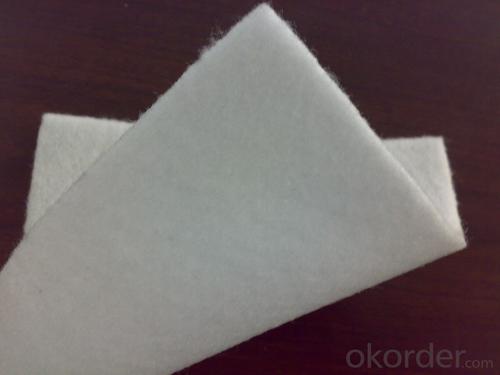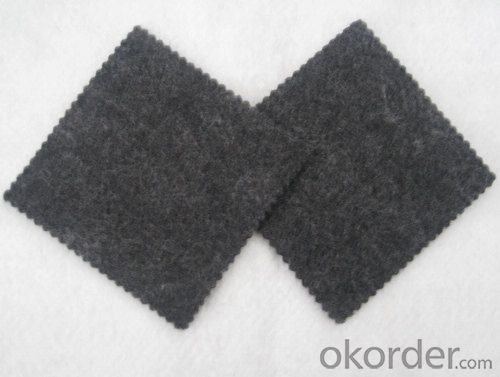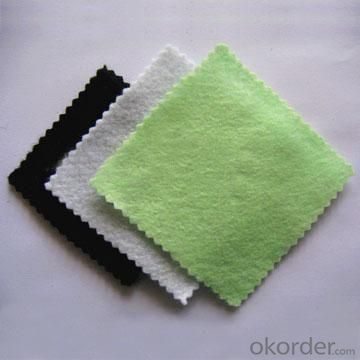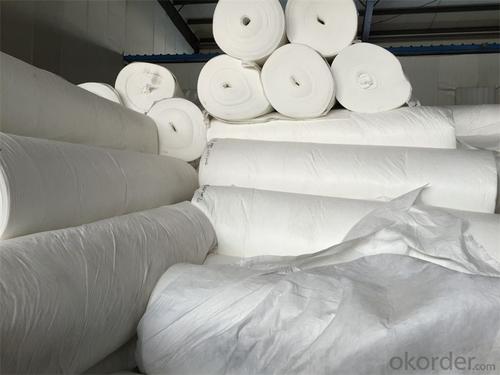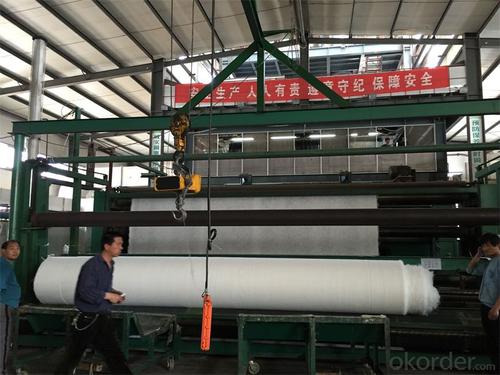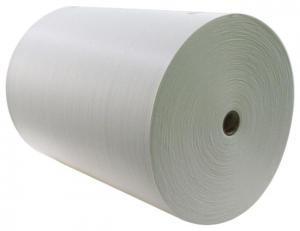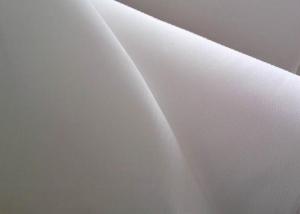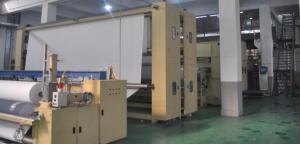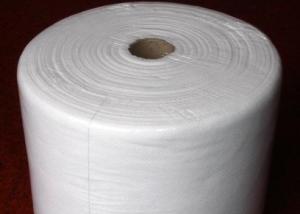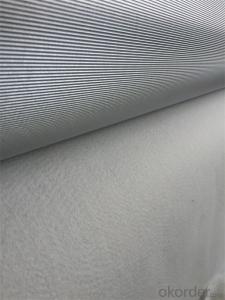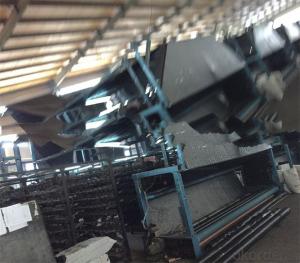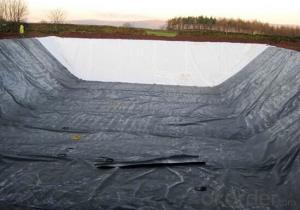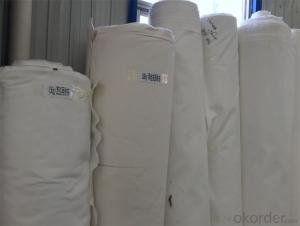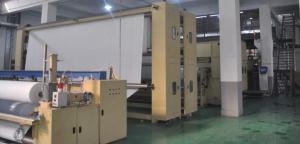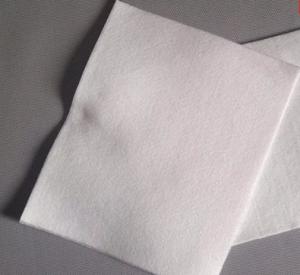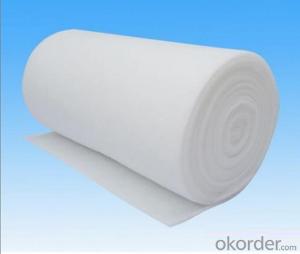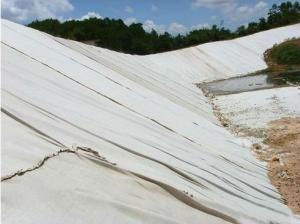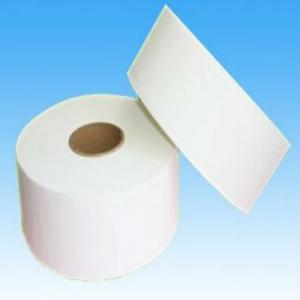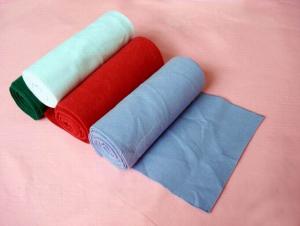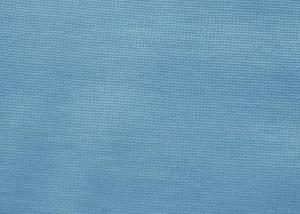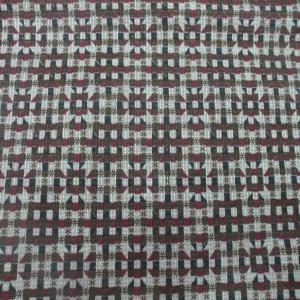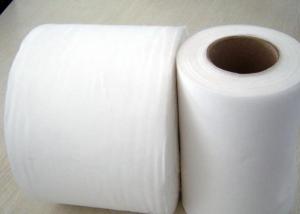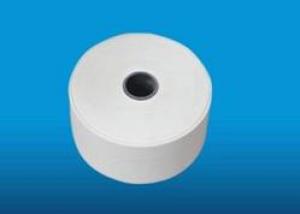Needle Punched Nonwoven Geotextile Polyester and Polypropylene
- Loading Port:
- Qingdao
- Payment Terms:
- TT or LC
- Min Order Qty:
- 10000 m²
- Supply Capability:
- 30000000 m²/month
OKorder Service Pledge
OKorder Financial Service
You Might Also Like
1. Specifications of our Geotextile:
- High Strength
- Anti-aging
- Anti-acid and alkali
- Abrasion resistng
- Flexibility
- Easy for construction
- Exprot Europe, Africa for years
- PP Nonwoven geotextile fabric
2. Gextextile Product Description:
--Our geotextile can be made of polypropylene (PP) or polyester (PET) .
-- The weight is available from 100g/m2 to 1500g/m2 and the width from 1m to 8m,
-- Two kinds of processing technical to select: needle punched and thermally bonded, long fiber or short fiber.
-- It is widely known as earthwork material and industry fabric, used in the areas of railway, highway, water conservancy, dam, tunnel,
subway, environment protection and so on.
-- We can supply different specifications as customers’ request.
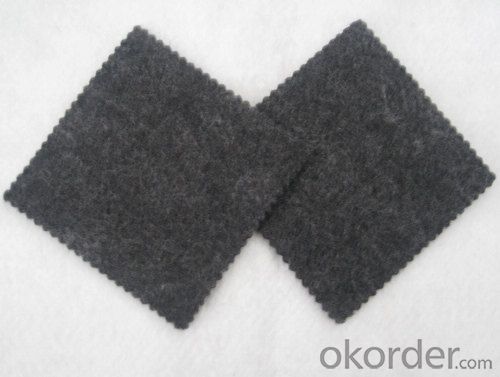
3. Geotextile Product Specification / Models:
Material: polypropylene (PP) thermally bounded
Weight: 100g/m2-1200g/m2
Width: 1-8m
Length: As customers’ demand (usually is 100m)
Package: PE film and woven cloth
Delivery time: With in 3weeks after received the advance payment
Payment terms: T/T 30% in advance+T/T 70% against the copies of original documents or L/C
4. Application of Geotextile:
1. Filtration
The filtration layer of the dykes, river canal, seacoast, concrete slope, retaining walls. At the same time of preventing the clay granule
from passing, it allows the water and the gas pass through freely.
2. Separation
The isolation of the railway dregs and the roadbed, roadbed and the soft base, surface of the airdrome and parking lot and the groundsill,
different dam materials. It isolates the soil and the gravel of two kinds different granule pathway from the groundsill or other buildings.
3. Reinforcement
The highway, railway, soilstone dam, breakwater, airport, backfill soil of retaining wall, slope protection, etc in which distributes the earth stress,
prevents the side-displacement of the earth body and improves the earth body stability.
Technical specification of short fiber needle punched non-woven geotextiles:
According to GB/T17638-1998 Standard
No. | Item | Specification | Note | ||||||||||
Mass per square meter g/m2 | 100 | 150 | 200 | 250 | 300 | 350 | 400 | 450 | 500 | 600 | 800 | ||
1 | Weight Variation % | -8 | -8 | -8 | -8 | -7 | -7 | -7 | -7 | -6 | -6 | -6 | |
2 | Thickness mm ≥ | 0.9 | 1.3 | 1.7 | 2.1 | 2.4 | 2.7 | 3.0 | 3.3 | 3.6 | 4.1 | 5.0 | |
3 | Width Variation % | -0.5 | |||||||||||
4 | Breaking Strength KN/m | 2.5 | 4.5 | 6.5 | 8.0 | 9.5 | 11.0 | 12.5 | 14.0 | 16.0 | 19.0 | 25.0 | MD and CD |
5 | Elongation at Break % | 25 ~ 100 | |||||||||||
6 | CBR Mullen Burst Strength KN≥ | 0.3 | 0.6 | 0.9 | 1.2 | 1.5 | 1.8 | 2.1 | 2.4 | 2.7 | 3.2 | 4.0 | |
7 | Sieve Size 090 mm | 0.07 ~ 0.20 | |||||||||||
8 | Vertical Permeability Coefficient cm/s | k× (10-1 ~ 10-3) | k=1.0-9.9 | ||||||||||
9 | Tear Strength KN ≥ | 0.08 | 0.12 | 0.16 | 0.20 | 0.24 | 0.28 | 0.33 | 0.38 | 0.42 | 0.46 | 0.60 | MD and CD |
Needle punched geotextile after treatment method | |||||||||||||
5. Geotextile Products Show:
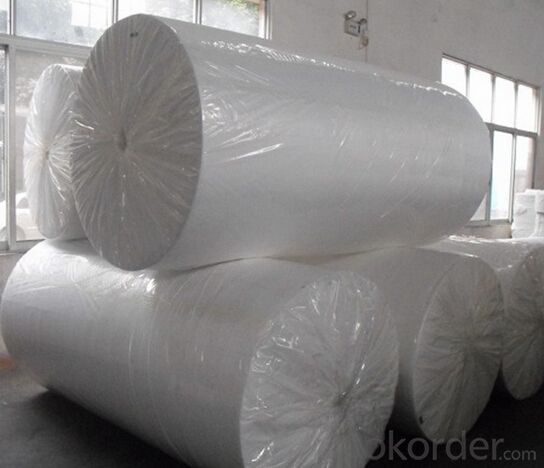
6. FAQ of our geotextile:
- Q: What can we do for the special customer?
A: Provide custom made service with customer's drawing; We make sure to provide you with the best solutions for your individual case. Whether standard items or non-standard items.
- Q: What can we supply?
A: We provide high levels of communication from start to finish.
- Q: What is our advantage?
A: Top Cemented Carbide has extensive business experience, Fast delivery and high quality.
- Q: How can TR fabrics and TC fabrics be distinguished?
- Polyester / viscose blended with more than 65/35 or 67/33. The characteristics of this kind of fabric is a strong sense of fabric smooth and bright color, hair type, feel good elasticity, good hygroscopicity; but poor dp.
- Q: What's the difference between polyester fiber and chiffon?
- Therefore, the two are not coordinate relations, is a subordinate relationship. Chiffon is made of polyester and polyester is the raw material of chiffon.
- Q: What is Coolmax?
- The advantage of CoolMaX moisture treatment is that it can remove moisture, while cotton simply absorbs moisture. In addition, CoolMaX not only has a positive effect on the body core temperature, but also fast drying, breathable, non fading, shrink free and crease resistant. In winter, CoolMaX is good for the underlying clothes, especially in aerobic activities (aerobic exercise).
- Q: Who can tell me how to distinguish fabric weft yarn to ah?
- In the fabric of different raw materials, usually cotton or cotton and flax weaving fabrics, cotton warp; filament interwoven fabric, silk as warp yarn; cotton interwoven fabric, wool, silk and cotton warp; natural silk and silk fabric, warp woven line natural; natural silk and rayon fabric. Is the natural silk as warp. Because of the wide use of fabrics and many varieties, the requirements for fabric materials and organizational structures are also varied, so they are determined according to the specific conditions of the fabric.
- Q: Which fabric ingredients belong to the B class? Which fabric ingredients belong to the C class?
- This is a clear regulation of formaldehyde content of clothing:A for infants and young children's clothing, its formaldehyde content shall not exceed 20 mg per kilogram,B class for direct contact with skin clothing, its formaldehyde content shall not be greater than 75 mg per kilogram,C class for non direct contact skin type clothing, its formaldehyde content shall not be greater than 300 mg per kilogram
- Q: How to choose dress fabric?
- Cotton wedding dress is very exquisite, do not think cotton is the best choice. It's best to know about the fabric, roughly 70% of the cotton, about 25% of the polyester and about 5% of the spandex. Both comfort, sweat, shrinkage smaller, and cost-effective.
- Q: Pure cotton fabric how to wash?
- White clothing can be a strong alkaline detergent high temperature washing, bleaching, underwear can not be soaked with hot water so as to avoid the Yellow stain. Other colors are best washed with cold water, not containing bleach ingredients detergent or washing powder for washing, so as not to cause bleaching, not to fall directly on the laundry detergent on cotton fabrics, so as not to local decolorization,
- Q: Are microfiber fabrics priced per square gram?
- Easy to wash and durable, compared with the traditional cotton towels, superfine fiber towel has six main features:High water absorption: superfine fiber adopts orange petal technique to separate filament into eight parts, which increases the surface area of the fiber and increases the porosity in the fabric. The wicking effect is enhanced by capillary wicking effect. Rapid water absorption and rapid drying become its distinctive characteristics.1, strong detergency: microfiber diameter 0.4 m silk is only 1/10, dust particles, the special cross section can more effectively capture as small as a few microns decontamination, degreasing effect is very obvious.2, do not shed: high-strength synthetic fiber filament and not easily broken, and the fine texture, not spinning, not off the ring, fibers are not easy to fall off from the surface of the towel. Use it as cleaning towel, towel is especially suitable for the polished surface paint, plating surface, glass, instrument and LCD screen, in the process of car glass cleaning, can achieve the ideal effect of the film.3, long life: ultrafine fiber strength, toughness, so it is the life of ordinary towel service life more than 4 times, even after repeated washing invariance, at the same time, polymer fiber does not produce protein hydrolysis like cotton fiber, even after use is not dry, not mildew, rot, has long life.
- Q: What is Rev 30 fabric?
- NBA Revolution 30 Jersey by the 60% recycled material is made, and the application of Formotion garment Adidas patent technology, not only can minimize seams, reduce friction between the shirt and player skin, but also through the natural movement of special material optimization of the performance of the players. At the same time, Adidas abandoned the original heavy material, and made use of breathable mesh cloth jerseys number, which can effectively reduce the weight of the shirt, and enhance the comfort of wearing. In addition, NBA Revolution 30 kit also applied the adidas unique Climacool fabric material, heat and moisture absorption of this fabric can be in three seconds players discharged to the surface, and then the drying speed of Jersey doubled
- Q: What fabric is it?
- The main use of no down pile is pants class, wearing a tight fitting, self-cultivation, warmth, soft features, and therefore loved by the majority of women like beauty. Not cashmere fabric excellent in gloss, elastic, soft, warm and good many advantages, popular and sought after, is widely used in modern textile industry; with cashmere fabric clothing before cleaning again in front, not dry, not bleach, should wash water, the water temperature should not exceed 40 degrees, if the cleaning washing machine you should choose to ease cleaning procedures. Steam ironing, the temperature is not more than 110 degrees, and finally hang dry.
Send your message to us
Needle Punched Nonwoven Geotextile Polyester and Polypropylene
- Loading Port:
- Qingdao
- Payment Terms:
- TT or LC
- Min Order Qty:
- 10000 m²
- Supply Capability:
- 30000000 m²/month
OKorder Service Pledge
OKorder Financial Service
Similar products
Hot products
Hot Searches
Related keywords
